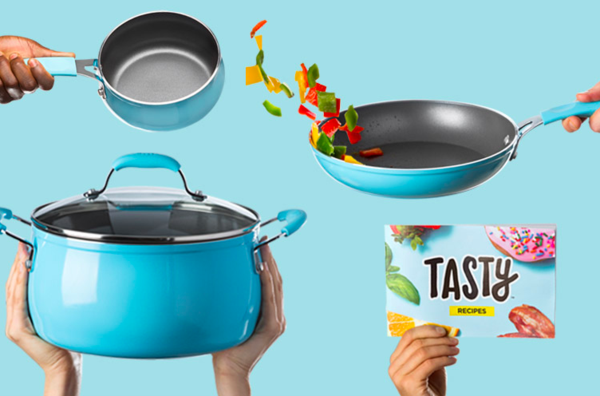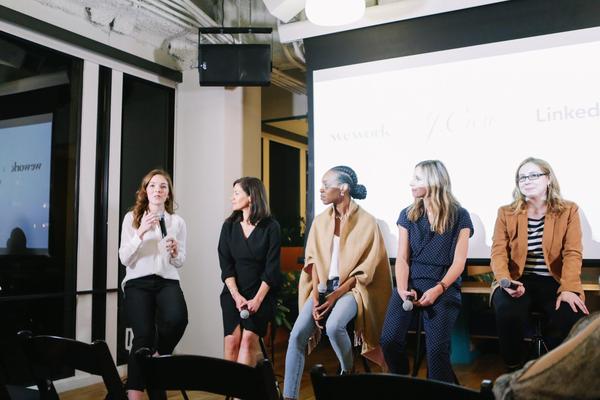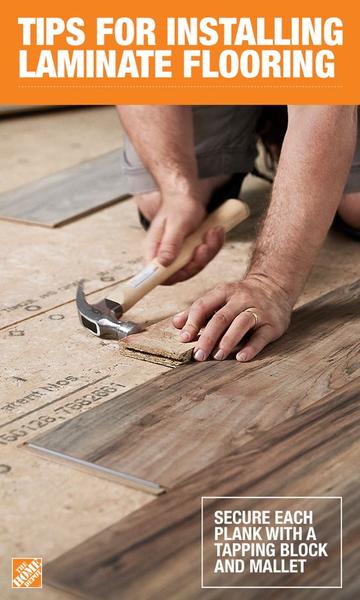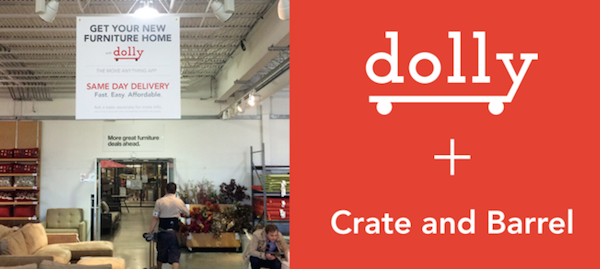 When retail changes as quickly as it does in today’s market, it’s more important than ever to constantly innovate and look for the next opportunity. One way to do that is through brand partnerships.
When retail changes as quickly as it does in today’s market, it’s more important than ever to constantly innovate and look for the next opportunity. One way to do that is through brand partnerships.
While collaborating with other businesses can certainly expand your reach and build buzz, it can also expose you to new ideas and tactics. You can test these new concepts before doing a full-blown integration into your business. And when it works, early adopters are seen as innovators.
Check this list of seven innovative retail partnership examples to find inspiration for your next collaboration:
Valentino and Alibaba

Chinese ecommerce monolith Alibaba and high-end fashion brand Valentino is one partnership example that’s found inspiration through technology to launch a one-of-a-kind project: a 3-D pop-up shop in Beijing.
The pop-up promoted Valentino’s Garavani Candystud product line, as well as drove awareness for Tmall’s Luxury Pavilion, which is a customer loyalty program focused on luxury products. The online Tmall Luxury Pavilion experience mirrored that of the in-person Candystud Factory pop-up, bridging the gap between the online and offline customer experience.
Why it Worked
Ecommerce only contributes 4% of luxury good sales, according to McKinsey & Company, and this is one way Alibaba is getting shoppers used to the idea of purchasing luxury products online.
By blending the virtual and the physical worlds with the pop-up, both brands have exposed consumers to a new way to shop. Plus, as JD.com makes moves to capitalize on the luxury goods market, this is one key way in which Alibaba can keep up with the competition.
Target and Michael Graves
A post shared by Victoria Beckham (@victoriabeckham) on Oct 19, 2016 at 9:50pm PDT
In 2003, Target kicked off its first high-end partnership with renowned architect Michael Graves, creating an exclusive line of kitchen and home products for the big box retailer. It was one of the first partnership examples of its kind: high-end design meets bargain-shopper-friendly department store.
Why it Worked
Target was one of the frontrunners in the affordable luxury movement. During a time when American consumers were spending less, the retailer found a way to make high fashion available to the mass public. Although the partnership ended in 2012, Target still uses the tactic today, through serial partnerships with various designers.
Starbucks and Spotify
A post shared by Starbucks Windy hill (@sbuxwindyhill) on Apr 3, 2018 at 3:30pm PDT
In 2015, Starbucks and Spotify launched a partnership that integrated the Spotify mobile app with the Starbucks My Rewards program and app. While in-store, customers could use either app to find out what music is playing in the store and add it to their saved music in Spotify.
The main goal of the collaboration was for Starbucks to drive customers to download the app and join their customer loyalty program. COLLOQUY’s Customer Loyalty in 2015 & Beyond report found that only 42% of loyalty program members are active, so this was a great way for Starbucks to incentivize both membership and engagement.
Why it Worked
There were two main keys to success for this partnership example:
- Mutually beneficial: While it seems like Starbucks may have come out on top in this partnership example, it was actually mutually beneficial for the two brands. Users who subscribed to Spotify’s paid memberships would get extra points for Starbucks My Rewards program.
- Immersive, omnichannel experience: Starbucks integrated the mobile experience into the in-store experience, and the mobile experience is one that customers could take elsewhere with them, through their Spotify playlists. Each store has locally inspired music, so when customers hear that in another location, it makes them recall that experience and keep Starbucks top-of-mind.
Walmart and BuzzFeed

At the end of 2017, Walmart and BuzzFeed announced their collaboration. The partnership is with BuzzFeed’s Tasty, which is a publication for food and drink recipes and related content. The partnership consisted of creating shoppable Tasty recipe videos, which would drive to Walmart’s ecommerce site.
Why it Worked
One of the main benefits of brand collaborations is the ability to quickly expand your toolset and expertise. Rather than figuring out how to create these videos and gain traction on social media on their own, Walmart turned to the experts to leverage the work they’ve already done and expertise they’ve already gained. This not only instills confidence that you’ll be happy with the finished product, but also eliminates the amount of time and money you’d have had to invest on your own.
J.Crew and WeWork

In April 2018, J.Crew, WeWork, and LinkedIn partnered up on a panel/pop-up shop series aimed at entrepreneurs and non-traditional workers — a key segment for all three companies’ customer bases. The series, held in several cities across the U.S., consisted of experts sharing their insights into what it means to be successful and how to get there.
Why it Worked
The partnership made sense for J.Crew: In an attempt to reach the professional crowd, to whom their clothing appeals, they went for more of a B2B play rather than the usual B2C approach. And WeWork is no stranger to retail and is reportedly making big moves in the space, including a purchase of New York City’s Lord & Taylor Building.
From J.Crew’s perspective, that means working with a brand that already understands effective collaboration and retail. And by tapping into LinkedIn’s 450+ million users, J.Crew expanded their reach and established themselves as an authority in the professional space.
Home Depot and Pinterest

J.Crew isn’t the only retailer that’s leveraged social media collaborations to reach new audiences and build buzz. Home Depot and Pinterest is a great partnership example that takes a more traditional B2C route.
Home Depot created a series of Built-In Pins posts that show shoppers not only which products they need to complete home improvement projects, but how to use them as well. Featuring articles, pictures, video tutorials, and how-tos, Home Depot empowered customers to use their products to complete amazing projects themselves.
After that, the two brands worked together to enhance Pinterest’s Shop the Look feature. With that, Home Depot uploaded 100,000 home decor products to the platform.
Why it Worked
With stiff competition from Lowe’s, especially in the home decor realm, Home Depot needed to find a way to step up its game and appeal to a more consumer base — less of a focus on contractors, and more of a focus on actual homeowners.
And as Lowe’s continues to find the perfect balance between utility and creativity through its social media campaigns, Home Depot went straight to the source to leverage social media in their own way.
Crate and Barrel and Dolly

Mobile app Dolly and home goods retailer Crate and Barrel is another innovative partnership example. Dolly is an app that people can use to find moving and furniture delivery services. The two brands partnered to offer furniture delivery services for customers of Crate and Barrel and its sister store, Land of Nod.
Why it Worked
Crate and Barrel used the partnership to sell the whole solution to customers and not just the products. Some customers may not have the means to bring large purchases home, so if the retailer can provide that service, it improves the overall customer experience. Plus, it alleviates any hesitations related to how customers will take the products home.
Additionally, Crate and Barrel was able to reduce furniture delivery times by using a service that already has the infrastructure in place to accommodate the customer demand — and look like an innovator in the space.
“Our partners get the benefit of broadcasting to their customers that they’re innovating the delivery experience in an effort to provide delivery that’s more convenient, more affordable and easier to use,” Dolly CEO Mike Howell said in a Retail Dive article.
Dunkin’ Donuts and Waze
Dunkin’ Donuts and navigation app Waze teamed up in first in 2012 to (literally) put their locations on the map. Then again in 2017, the duo collaborated to offer order ahead options to customers. Catering to the on-the-go Dunkin’ Donuts shopper, Waze users could use the in-app Order Ahead feature to place their coffee or food orders.
The brands pulled in another partner, famous NFL player Rob Gronkowski, who recorded voice over for the app. Users would be led to the closest Dunkin’ Donuts by Gronkowski’s voice.
Why it Worked
Like many of the other mobile app partnership examples, this one strategically integrated Dunkin’ Donuts DD Perks customer loyalty program. Users had to be enrolled in the program to be able to take advantage of the Order Ahead feature in Waze.
Plus, the partnership provided a benefit to customers of both brands. For Dunkin’ Donuts loyalists, it made their morning commute that much quicker or more convenient. For Waze users looking for a bit to eat, discovering the closest place to get your donut and coffee fix was just a couple of taps away.
Discover Other Partnership Examples
While these are some great retail partnership examples to inspire you, this isn’t a comprehensive list of successes. There are hundreds of previous and existing partnership examples out there between retailers both big and small.
Which retail partnership examples do you think are particularly innovative? Why did it work?

